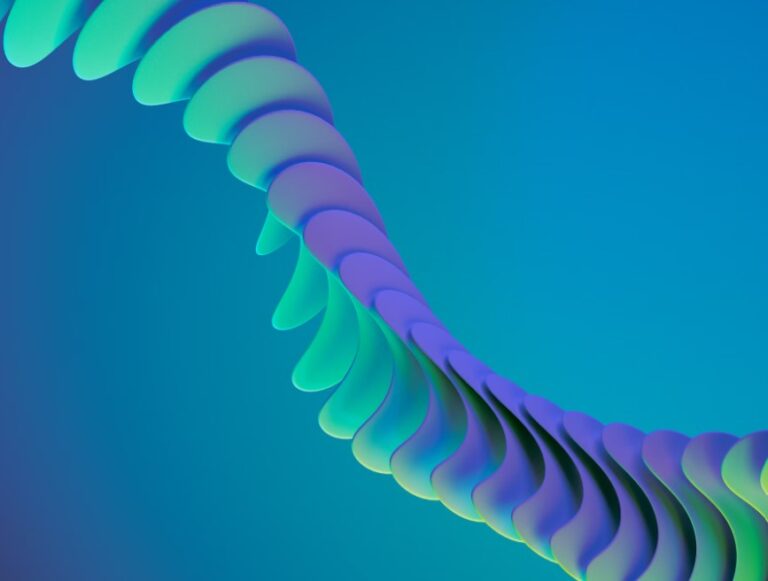Animation design is a multifaceted discipline that involves creating moving images through a sequence of frames or digitally generated images. It encompasses various styles, techniques, and technologies to bring visual elements to life.
In the ever-evolving realm of animation design, 2023 stands as a watershed moment marked by groundbreaking trends. As technology continues to advance, creative boundaries are pushed, leading to a diverse landscape of styles and techniques.
Table of Contents
Trends shaping the animation design scene this year
1. Realism redefined
One notable trend is the relentless pursuit of realism. Animators are leveraging cutting-edge technologies to achieve lifelike visuals, with an emphasis on detailed textures, lighting, and physics. This commitment to realism enhances storytelling and captivates audiences in new and immersive ways.
2. Interactive Storytelling through AR and VR
The integration of augmented reality (AR) and virtual reality (VR) has become a game-changer in animation design. Creators are leveraging these technologies to craft narratives that transcend traditional boundaries. Viewers can now step into animated worlds, fostering a deeper connection and engagement with the content.
3. AI-driven animations
Artificial Intelligence (AI) has found its way into animation studios, revolutionizing character animations. Machine learning algorithms enable the creation of more dynamic and responsive characters, breathing life into virtual worlds. This trend not only enhances efficiency but also opens new possibilities for personalized and adaptive storytelling.
4. Sustainability and inclusivity
A societal shift towards sustainability and inclusivity is reflected in animation design. Studios are increasingly conscious of their environmental impact, opting for eco-friendly practices in production. Additionally, there is a growing emphasis on diverse and representative characters, reflecting the rich tapestry of global audiences.
5. Stylized 2D animation renaissance
While technology propels the industry forward, the charm of 2D animation remains timeless. Stylized 2D animation is experiencing a renaissance, blending traditional techniques with modern aesthetics. This trend showcases the enduring appeal of hand-drawn artistry in a world dominated by digital wizardry.
Different aspects of animation design
1. Traditional animation
– Hand-drawn animation: The classic method where each frame is drawn by hand.
– Cel animation: Involves creating characters and backgrounds on transparent sheets (cels) and photographing them in sequence.
2. Computer-generated animation (CGI)
– 3D animation: Uses computer-generated imagery to create three-dimensional moving images. Commonly used in films, games, and simulations.
– 2D animation: Digital tools are employed to create two-dimensional animated sequences, combining traditional techniques with modern technology.
3. Stop motion:
– Frame-by-frame photography: Objects or characters are physically manipulated and photographed frame by frame to create movement.
4. Motion graphics
– Graphic design in motion: Involves animating graphic elements, typography, and visual effects often used in advertising, branding, and title sequences.
5. Interactive animation
– AR and VR animation: Animation designed for augmented reality and virtual reality experiences, providing immersive and interactive storytelling.
6. Character animation
– Personification of characters: Bringing characters to life through movement, expressions, and emotions, often crucial in storytelling.
7. Advanced technologies
– AI-driven animation: Integrating artificial intelligence to enhance animation creation and make characters more dynamic and responsive.
– Physics-based animation: Using real-world physics to simulate natural movements in animation.
The future of animation design
1. Real-time rendering
– Advancements in real-time rendering technologies allow animators to create high-quality animations with reduced production time. This is particularly relevant in gaming and interactive media.
2. Immersive experiences
– Virtual Reality (VR) and Augmented Reality (AR) are reshaping animation, providing immersive experiences. Animators will increasingly focus on creating content tailored for these platforms.
3. AI and machine learning
– Integration of AI and machine learning in animation can automate repetitive tasks, enhance character animation, and generate dynamic content based on user interactions.
4. Blockchain for intellectual property
– Blockchain can be used to secure intellectual property rights and ownership in the animation industry, ensuring fair compensation for creators and reducing piracy.
5. 3D printing and animation
– Animation design may intersect with 3D printing, allowing physical objects and characters from animations to be brought into the real world.
6. Cross-platform integration
– Seamless integration of animations across various platforms, from social media to mobile apps, enabling creators to reach broader audiences.
7. Generative design
– Generative design techniques, driven by algorithms, can aid animators in creating unique and dynamic content by leveraging computational creativity.
8. Collaboration in virtual spaces
– Virtual collaboration tools will enable animators to work together in shared virtual spaces, fostering global collaboration and increasing the efficiency of animation production.
9. Ethical considerations
– As AI becomes more involved in animation, ethical considerations around the use of AI in storytelling, character design, and representation will become increasingly important.
Constant state of innovation
As we navigate the animation landscape of 2023, it’s evident that the industry is in a constant state of innovation. Realism, interactivity, AI integration, sustainability, and a nod to traditional artistry collectively shape the trends defining this era of animation design. It’s an exciting time for both creators and audiences as they embark on a visually stunning and emotionally resonant journey through the ever-expanding realms of animation.
In essence, the future of animation design is a dynamic landscape where technological innovation, creative expression, and user engagement converge. As these trends continue to evolve, animators and designers will find new opportunities to push the boundaries of what is possible in the world of animation.












